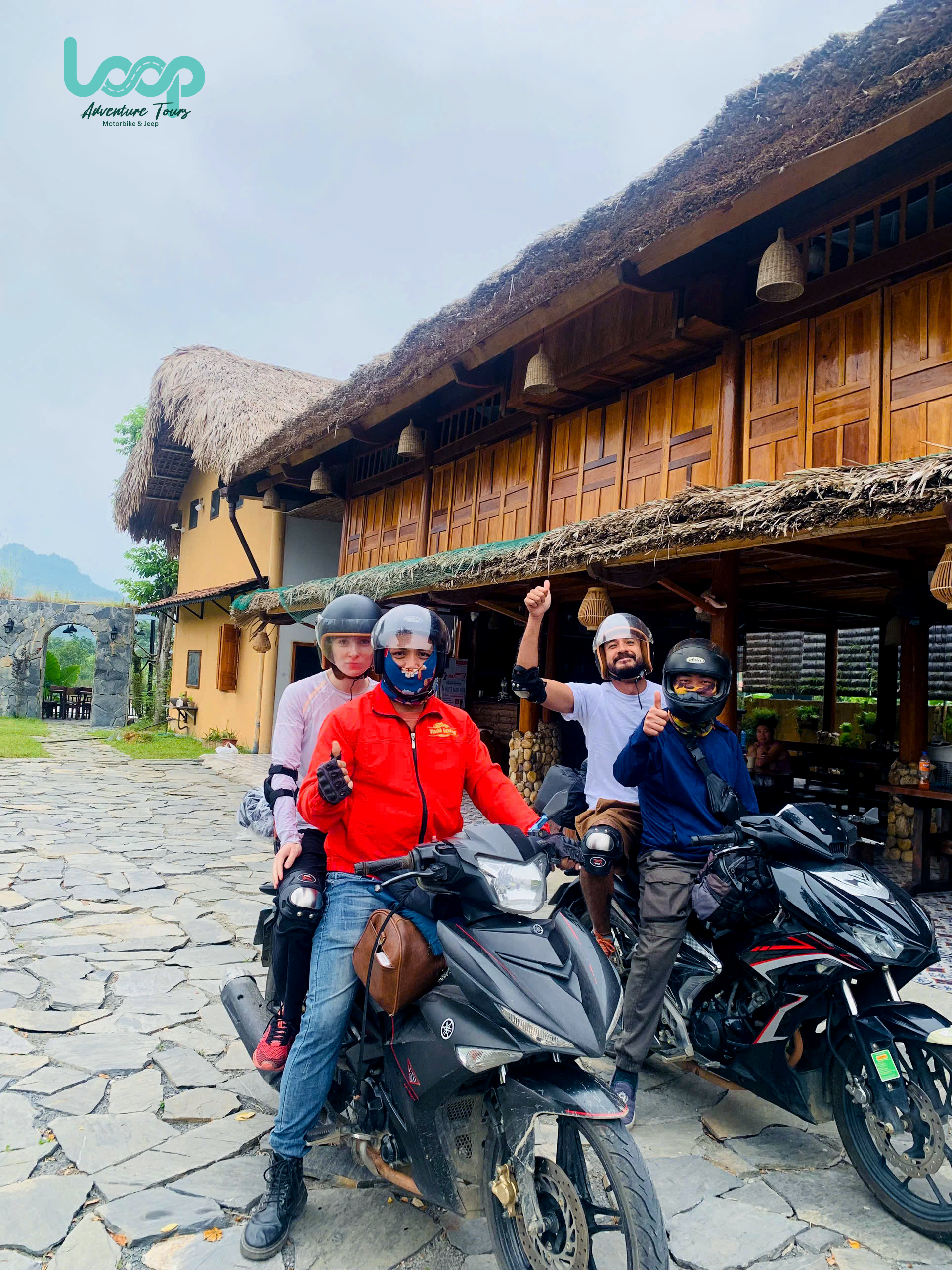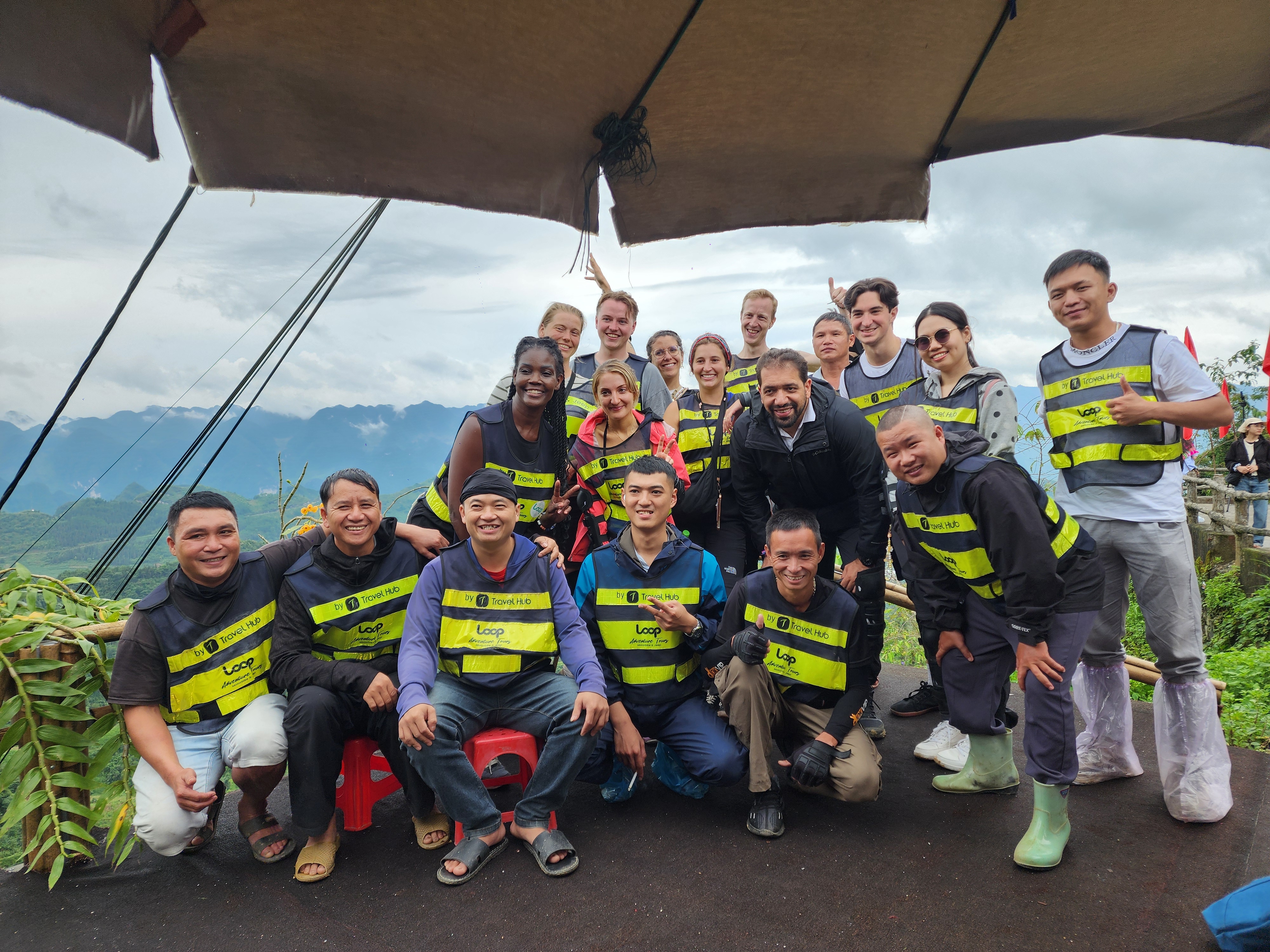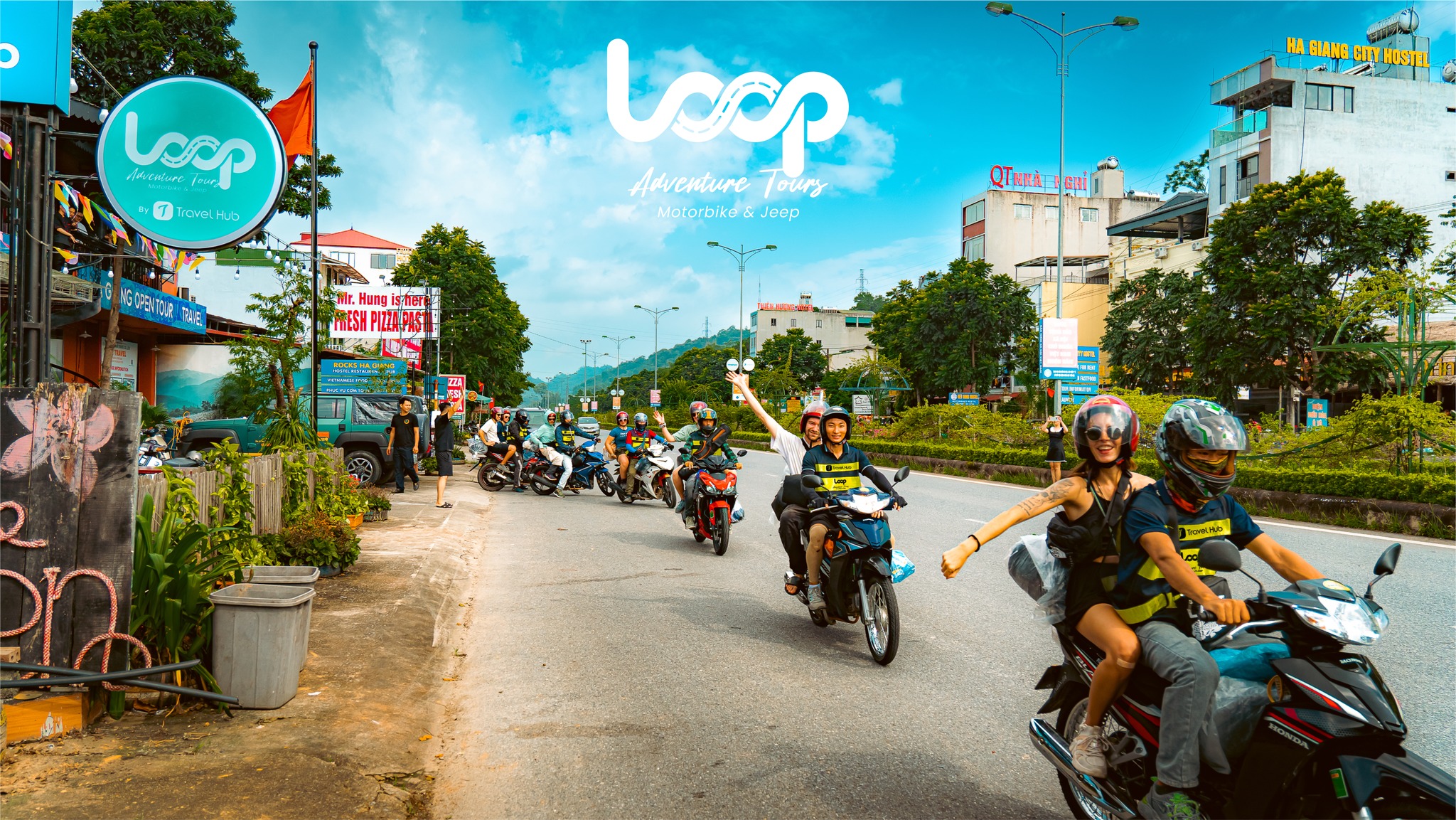Ha Giang, located in northern Vietnam, is famous for its breathtaking landscapes, winding mountain roads, and stunning ethnic villages. Many adventure seekers dream of conquering the Ha Giang Loop, but one question often arises: Is the road to Ha Giang dangerous? In this article, we’ll explore the challenges, risks, and safety tips for travelers who want to experience this incredible route.
Motorbikes are the most suitable means of transport for backpacking in Ha Giang, but there are many sharp turns and steep slopes that make it difficult for inexperienced people.
Read more:

Understanding the Road to Ha Giang
The journey to Ha Giang typically starts from Hanoi, with a distance of about 300 km. You can either take a bus or ride a motorbike. However, the real adventure begins when you start exploring the Ha Giang Loop, a 350-km circular route that takes you through high mountain passes, steep cliffs, and deep valleys.
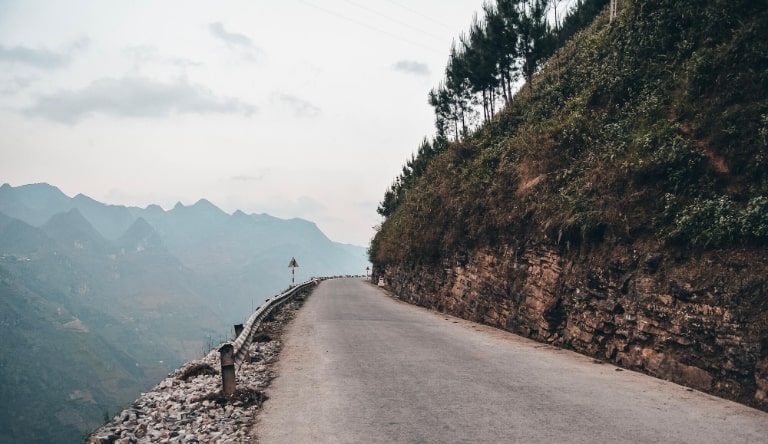
Key Features of the Ha Giang Roads:
- Winding and narrow roads – Many sections have sharp turns and steep inclines.
- High altitudes – Some roads are above 1,500 meters, making them prone to fog and landslides.
- Unpaved and bumpy sections – While many roads are well-paved, some areas, especially in remote villages, can be rough and slippery.
- Traffic conditions – You’ll share the road with local trucks, buses, and sometimes even wandering animals.
Is the Road to Ha Giang Dangerous?
The answer depends on several factors:
Road Conditions
- Some roads are well-maintained, but others can be treacherous, especially after heavy rain.
- The Ma Pi Leng Pass is one of the most famous yet dangerous sections due to its narrow cliffs and sharp turns.
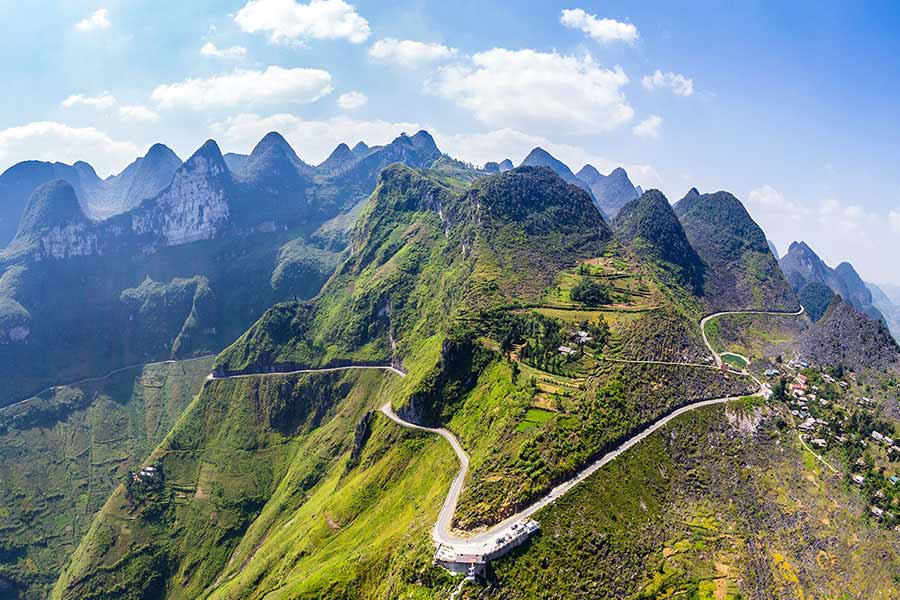
Weather Challenges
- Rainy season (May – September): Roads can become muddy and slippery, increasing the risk of accidents.
- Winter (December – February): Thick fog and icy roads can reduce visibility.
Driving Experience
- If you are an experienced motorbike rider, the trip is manageable.
- If you lack experience, it’s better to hire a local guide or take a car tour.

Accidents and Safety Risks
- Speeding, reckless driving, and lack of experience often lead to accidents.
- Some areas lack guardrails, making it essential to drive cautiously.
How to Stay Safe on the Ha Giang Road
Choose the Right Vehicle
Your choice of vehicle plays a crucial role in your safety and comfort during the trip.
Motorbike Selection
- Semi-automatic motorbikes are recommended as they provide better control on steep roads.
- Manual motorbikes are ideal for experienced riders but require skillful handling.
- Avoid fully automatic scooters, as they lack power for steep inclines and are harder to control on slippery terrain.
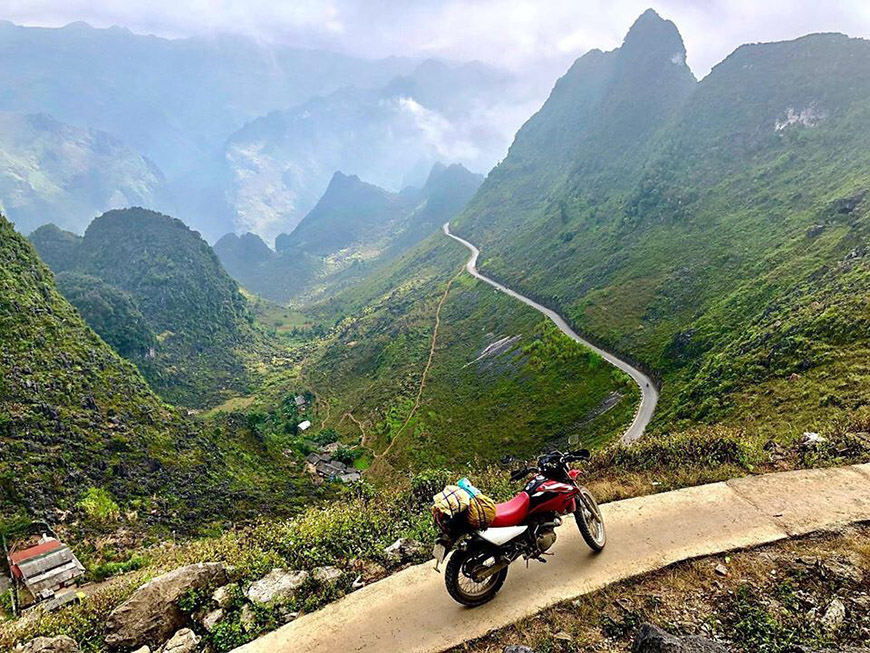
Bike Inspection Checklist
Before renting a motorbike, check:
Brakes – Test both the front and rear brakes to ensure they are responsive.
Tires – Look for any signs of wear or low tread, which can be dangerous on rough roads.
Lights & Horn – You’ll need these, especially on foggy roads and sharp turns.
Fuel Efficiency – Some sections of the route have long distances between gas stations, so ensure your bike has good mileage.
Suspension & Engine Sound – Listen for unusual noises that could indicate mechanical issues.
Wear the Right Protective Gear
Many accidents in Ha Giang occur because riders are not properly equipped. Wearing protective gear can significantly reduce injury risks.
Essential Riding Gear
- Helmet – A full-face helmet provides the best protection. Avoid low-quality rental helmets.
- Jacket & Pants – A padded or armored jacket protects against falls and weather conditions.
- Gloves – Help with grip and protect hands from cold and injuries.
- Sturdy Shoes or Boots – Avoid flip-flops or sandals. Shoes with a good grip are essential for balance.
- Rain Gear – A lightweight, waterproof raincoat can be a lifesaver during sudden downpours.

Drive Cautiously and Adjust to Road Conditions
The Ha Giang Loop has many sharp bends, steep inclines, and blind curves, requiring extra attention.
Safe Driving Practices
Stick to a safe speed – Avoid speeding, especially on downhill sections.
Use your horn – Many turns have limited visibility. A quick honk warns oncoming vehicles.
Watch out for trucks and buses – Larger vehicles often take wide turns. Keep a safe distance.
Expect obstacles – Local livestock (buffaloes, cows, and dogs) frequently roam the roads.
Slow down before turns – Braking too late can cause skidding, especially on gravel roads.
Key Dangerous Sections to Watch Out For
- Ma Pi Leng Pass – One of Vietnam’s most scenic but also most treacherous mountain passes. The road is narrow with sheer drops.
- Bac Sum Pass – A winding road with steep inclines, requiring precise control.
- Lung Cu Road – Some sections are unpaved and can be difficult after rain.

Avoid Night Riding
Night riding in Ha Giang is highly discouraged due to poor visibility, lack of streetlights, and increased accident risks.
Dangers of Night Riding
- Sharp curves are harder to see – Making it easy to miscalculate turns.
- Local vehicles don’t always use headlights – Some trucks and bikes drive without lights.
- Colder temperatures – If riding in winter, freezing temperatures can make roads icy.
- Increased chances of getting lost – GPS signals can be weak, and signposts may not be well-lit.

What to Do If You’re Delayed and Stuck After Dark
- Find the nearest homestay or guesthouse rather than continuing the ride.
- Use a flashlight if you must ride to ensure visibility.
- Ride slowly and cautiously, keeping to the right side of the road.
Check the Weather Before Traveling
Weather plays a significant role in road safety, as heavy rains, fog, and strong winds can make riding dangerous.
Best Weather Conditions for Riding
- Dry season (October – April) – The best time to visit Ha Giang, with clear skies and stable road conditions.
- Avoid peak rainy season (May – September) – Landslides and floods can make roads extremely hazardous.

How to Handle Different Weather Conditions
Rainy Weather:
- Ride slowly and brake gently to avoid skidding.
- Wear a high-quality raincoat to stay dry.
- Avoid roads near riverbanks, as flash floods are possible.
Foggy Weather:
- Turn on your low beam lights for better visibility.
- Ride with extra caution and use your horn more frequently.
Windy Conditions:
- Grip the handlebars firmly and lean slightly against the wind for balance.
- Be extra careful on exposed mountain passes, as wind gusts can be strong.
Travel with a Group or Hire a Local Guide
If you're an inexperienced rider, going with a local guide or joining a tour group is a great way to ensure safety.
Benefits of Hiring a Guide
Navigation Help – Many rural areas lack proper signage.
Local Knowledge – Guides know the safest and most scenic routes.
Mechanical Assistance – If your bike breaks down, they can help fix it.
Emergency Support – In case of an accident, they know where to get medical help.

Recommended Tour Options
- Motorbike Tours with a Driver – Sit on the back of a skilled local rider.
- Self-Driving Tours – Join a guided group where you ride your own bike but follow an experienced leader.
Stay Sober and Mentally Alert
Drinking and riding is a common but dangerous mistake among travelers in Ha Giang.
Avoid alcohol before riding – Some travelers stop at viewpoints for beer, which can impair judgment.
Stay well-rested – Long hours of riding require focus and energy.
Stay hydrated – Mountain roads can be physically demanding, so drink enough water.

Plan Your Fuel Stops and Carry Essentials
Some parts of the Ha Giang Loop have long distances between gas stations and repair shops.
Fill up whenever you see a gas station, especially in remote areas.
Carry basic repair tools, such as a tire pump and patch kit.
Download offline maps, as internet access can be limited in certain areas.
Final Safety Checklist Before You Ride
Bike is in good condition (brakes, tires, lights, engine)
Wearing proper gear (helmet, jacket, gloves, shoes)
Checked weather forecast for safe conditions
Have a plan for fuel stops and an emergency contact
Riding at a safe speed and avoiding night travel
By following these safety precautions, you can enjoy the stunning landscapes of Ha Giang while minimizing risks. With careful planning and responsible riding, your Ha Giang adventure will be both thrilling and safe.
For an unforgettable trip to Ha Giang, consider booking a tour with us. Contact us today via our hotline: +84329196074 and let us help you create the journey of a lifetime!


